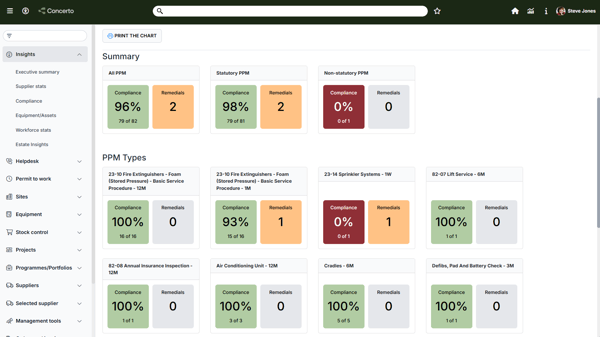
People behind the buildings: Guy's and St Thomas NHS
People behind the buildings: Estates leadership at Guy's and St Thomas' NHS Trust
Managing one of the UK's most complex hospital estates in the heart of London and beyond.
In this episode of People Behind the Buildings, co-hosts Matt Blanchard (GovNews) and Matt Hickley (Bellrock) are joined by Andrew Astbury, Managing Director of Essentia at Guy's and St Thomas' NHS Foundation Trust.
Together, they explore how one of the most iconic and diverse NHS trusts in the country maintains, modernises and stewards a vast and historically significant estate while facing down modern challenges like capital funding, carbon targets, digital transformation and clinical collaboration.
Who is Andrew Astbury?
Andrew has been with Guy's and St Thomas' for just under a year, heading up Essentia, the in-house estates and facilities brand for the Trust. While Essentia gives its 2,500 staff a distinct identity, they are NHS employees delivering essential services, including:
- Hard and soft FM
- Capital projects
- Patient transport and sterile services
- Property management across five major hospitals and over 100 community sites
A diverse and historic estate
GSTT's estate is unusually broad and complex. It includes:
The five main hospitals:
- Guy's Hospital: home to the iconic Guy's Tower (second tallest hospital in the world)
- St Thomas' Hospital: dating back to the 1,100s and Florence Nightingale's base
- Evelina London Children's Hospital: Victorian heritage and modern children's care
- Royal Brompton Hospital: opened in the 1840s
- Harefield Hospital: set in greenbelt land near Uxbridge, dating from 1915
“It's the full spectrum Victorian listed buildings, cutting-edge surgical spaces, and community clinics tucked into GP surgeries.”
From micro to macro: The challenge of scale
Andrew shares how managing this scale requires constant agility. Whether addressing a faulty kitchen extractor or planning electrical resilience upgrades for a tower block, his role shifts from the strategic to the granular every day.
Collaboration, competition and capital constraints
Andrew reflects on the opportunities and limits of collaboration across the NHS:
- Local partnerships work well (especially via ICSs)
- But national capital competition can create silos and inefficiencies
- The business case approval process remains a major bottleneck
He calls for earlier, ongoing collaboration between NHS providers, NHS England and HM Treasury throughout the design and investment lifecycle rather than a reactive, paperwork-heavy end-stage review.
Data-driven space utilisation
In response to funding pressures, Andrew is focused on smarter use of space. GSTT is:
- Integrating electronic patient records (EPR) with estate management systems to match clinical usage with physical occupancy
- Using IoT sensors, swipe data and Wi-Fi analytics to build a full picture of estate utilisation
- Collaborating across the ICS to ensure decisions about underused spaces don't displace responsibility to others
“Space isn't just about square metres, it's about patient impact, system sustainability and collaboration.”
Recent projects impacting clinical care
Andrew shares two highlights:
- A total-body PET scanner 5x more sensitive and up to 4x faster than standard diagnostics, built with King's College London
- A Children's Day Treatment Centre, creating a calming, efficient space for 2,500 children annually, and easing pressure on main surgical theatres
Maintenance and backlog decision-making
With a growing maintenance backlog and finite budgets, GSTT relies on:
- Clinical collaboration to prioritise spending decisions
- Transparent risk assessments and shared decision-making with departments
- Empowering clinical staff to help shape choices around infrastructure resilience
“The estates team can't work in isolation, we need clinicians at the table to ensure investment decisions reflect patient care.”
Technology, CAFM & AI
GSTT is planning a CAFM system upgrade and increasing use of:
- PAM (Premises Assurance Model) as a year-round performance platform, not just an annual submission
- Data visualisation tools for fire, water and asset risk
- Smart theatre technology to monitor systems and apply predictive analytics via AI
Sustainability strategy: three key themes
GSTT's environmental goals are grouped into:
- Carbon zero: reduce emissions through LED upgrades, energy management, transport and more
- Connecting with nature: use of green space, sustainable food, and clean air strategies
- Cycle of resources: focus on whole-life costing, circularity and smarter material choices in capital projects
Recent wins include £3.5M in LED upgrade funding from NHS England, already being deployed across the estate.
Looking ahead: A new estates strategy
GSTT's new Trust-wide strategy includes infrastructure as one of its five strategic objectives something Andrew notes is still rare in the NHS. The forthcoming estates strategy will:
- Set out a long-term vision to 2030
- Align with clinical, operational, digital, and sustainability goals
- Balance centralised oversight with devolved site autonomy
“We're guardians of the estate not just the bricks, but how it operates and serves our communities.”
Listen now
From 12th-century hospitals to AI-powered theatres, this episode reveals what it takes to manage a legacy estate while planning for the future.
The People Behind the Buildings
The new podcast on the block, for all the estate and property geeks to listen to on their lunch break.


